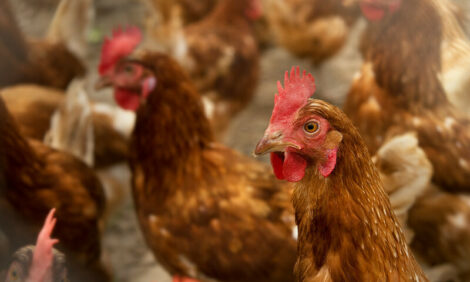



CME: Animal Welfare in the Media & Meat Demand
US - Animal welfare issues are in the news again this week following the latest HSUS 'undercover' video release, this time of a Virginia sow farm owned by Smithfield Foods' pork production division, Murphy-Brown, according to Steve Meyer and Len Steiner.The HSUS announcement appears to have more to do with pressuring Smithfield to carry through with its pledge to eliminate sow gestation stalls at its company-owned farms than it did to mistreatment of animals. Smithfield made that pledge back in January 2007 and said it would complete the process in 10 years. The pace of the project slowed – we understand it did not completely stop – during 2008 and 2009 as Smithfield incurred significant losses and engaged in a large cost-cutting effort which has returned the company to profitability. The company is investigating the situation at the Virginia farm, bringing in noted animal handling specialist, Dr Temple Grandin, Virginia's state veterinarian and the Virginia Department of Agriculture. Smithfield's statement said that it would take action according to its animal welfare policy should any wrong-doing be found on the part of any Smithfield employee.
So do these animal welfare incidents have any impact on meat demand? That is the question addressed by a recent research study by Dr Glynn Tonsor of Kansas State University and Dr Nicole J. Olynk of Purdue University. The research paper as well as a fact sheet can be found at KSU's AgManager web site, [click here]. Tonsor and Olynk developed indices of public information on animal welfare by searching US newspapers from 1982 to 2008. The indices for 1999-2008 appear in the chart at right. Note that all indexes have trended higher in recent years and that the index for beef spiked nearly nine-fold in 2008 when the Westland/ Hallmark downer cow event occurred in California. The indices were included as a factor in estimating a meat demand system to measure their impact.

(Tonsor &Olynk, 2010)
Interestingly, the estimated economic model suggests that animal welfare issues have NOT impacted beef demand but have reduced both pork and poultry demand. In addition, the impact of animal welfare publicity occurs in the quarter in which it happens and the following quarter.
Our take is that it appears the public may have attributed the 2008 beef situation to one bad actor. Conversely, the public may view the situations in pork and poultry as more systemic given the more steady rise in those indexes. That is our take, not that of the authors.
The authors note that the welfare indices' elasticities – the percentage change in quantity purchased for each percentage change in the indices – are smaller than are those for price and expenditures but that they should not be considered economically insignificant.
They estimate that pork and poultry demand in 2008 would have been 2.65 and 5.01 per cent higher, respectively, had the media attention to animal welfare issues been the same at the end of 2008 that it was in the first quarter of 1999. The real issue is that these impacts are accruing relatively constantly over a long period of time.
Perhaps most important, the study found that "increased media attention caused a reallocation of expenditures to non-meat food rather than reallocation of expenditures across competing meat products". We read that to say: "We're all in the same boat when it comes to animal welfare issues so take no joy in your competitors’ troubles."
It should be noted that the study looks only at the demand side of the situation. The authors point out: "The changes to estimated consumer demand need to be paired with production cost impacts associated with adjustments in on-farm production practices to derive estimates of the et economic influences on consumers, livestock producers and society in general."
These demand impacts can be offset somewhat by changing the way we raise animals – but at what cost? And in the long run, consumers pay all costs.
As we expected, the reaction of Live Cattle futures to Friday's Cattle on Feed report was very muted – but Feeder Cattle futures were another question completely. Live Cattle futures were slightly (less than 20 points) higher for the February through July contracts and then mixed from there forward. 2011 Feeder Cattle contracts gained $1.50 to $2.25 with the highest increase being for the March contract – and that in spite of higher corn futures on Monday. With Live Cattle steady and Corn higher, it appears that the feeder cattle market is growing more and more concerned about future feeder cattle supplies – quite understandable if our hypothesis is correct and placements have indeed been pulled forward due to limited wheat pasture opportunities.











